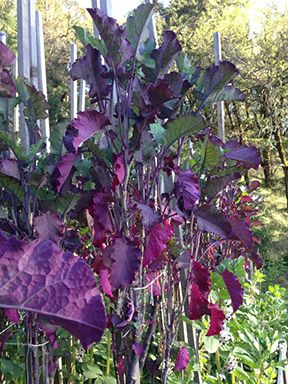Collard Greens Zone 7
Growing collard greens in summer or fall. Full sun to part shade.
They will come back full force in about 2 weeks or so.

Collard greens zone 7. Be sure not to disturb the plant roots in the process. Crops such as beets Swiss chard kale and kohlrabi can all be sown at the beginning of September. Slightly acidic 65 to 68 Native Area.
I am not sure if they will get any action like that down here in Georgia but I am still interested in seeing if they really do taste differently. Collard greens are low-maintenance plants that only require basic care to thrive. Kale and collard greens will grow all season long in Maryland Zone 7.
20 to 36 in. This is especially critical in zones 6-7 because this will kill the plant if its too cold. Watering your collards evenly and consistently will ensure a healthy crop.
Theyre an excellent choice for both northern and southern climates because they love the heat but also tolerate cold weather. Similar to kale collard greens are supposed to taste better after they have been touched by a little frost. Space plants 18 to 24 inches apart in an area with full sun and fertile well-drained soil with a pH of 65 to 68.
Collard greens prefer full sun to partial shade with at least 5 solid hours of direct sun per day. Collard greens grow in zones 6-10. They can be grown as a perennial in Zones 7-10.
Water well approximately 6 min. Season extension techniques such as building cold frames or hoop houses can be useful to protect your greens from snow and super cold temperatures. Mediterranean and Asia Minor.
These plants will grow well in raised beds containers and in-ground gardens. Collard greens planting may also be done in early spring for a summer harvest but adequate moisture is necessary for collards greens growing successfully in summer heat. Extend the Season in Cold Climates In colder regions Zones 7 and below there are a number of steps you can take to keep your collards producing for as long as possible into the winter months.
Plant collard greens in spring 3 to 4 weeks before the last frost. Quick Guide to Growing Collards. Many varieties will even hold through the winter and can be picked if protected with a cold frame or another season extender.
Loosen the soil carefully with a border fork 3 to 4 inches deep between the tree collards and around the edges of the bed to aerate the soil and let water in more easily. Propagating From Seeds Collard greens grow readily from seed. They are biennial plants in zones 7-10 and reseed to come back each season.
For those in warmer regions you have the freedom of planting almost anytime you want since it rarely gets cold enough to damage the leaves. Tree collards thrive on the coast and require more care in hotter micro-climates and inland locations. Improve your native soil by mixing in several.
I absolutely LOVE growing lettuce. In milder USDA zones 8 and higher growing collard greenss in the spring and fall producing two crops in a single year is possible. Ive chopped the stalk down in summer leaving just the root to find it sprouting again in fall.
Trim off flower stalks. Grown as an annual in all zones. Things like fog high humidity rain overhead irrigation and even dew can cause it to spreadMildews cause chlorosis of the leaves and you can often see orange or grey blotches.
Seasonal expansion techniques such as making winter frames or hoops can help protect your greens from snow and extreme cold temperatures. If your soil gets dry too quickly mulch around the plants to retain moisture. Usually grown as an annual.
In hotter locales plant them in part-shade and give them plenty of water. Youll find collard greens growing in USDA hardiness zones 6 through 10. Just remove them and treat for pests.
If the weather gets too hot or too cold your collard green plants. Frost actually improves the flavor of collard greens. Collard greens collards tree cabbage.
Treated well they will grow more than 6 feet tall and live for 3 to 5 years. 6 to 11 USDA. Collard greens need moist soilaround two inches of water per week.
If you get a big pest infestation or that heat is causing damage you can cut kale and collards back by like 80 of their leaves. In the colder regions zones 7 and below there are many steps you can take to produce your Collard as long as possible during the winter months. Collards and cabbages can be transplanted at this time.
In some parts of zone 7 October is essentially frost free so some crops can be started even later for a really late fall harvest. Collards are frost tolerant so growing collard greens in USDA growing zones 6 and below is an ideal late season crop.

How To Grow Collard Greens Gartenarbeit Garten Ideen Fur Weihnachten

Seeds That Grow Best In Zone 7 4 Winter Vegetables Lettuce Seeds Garden Seeds

Can You Eat Kale That Has Turned Yellow Gardener S Path Kale Kale Plant Harvesting Kale

Collard Greens Bundle Png Image Collard Greens Garlic Benefits Best Vegetables To Eat

Pin On Gardening In Fall Winter

7 Of The Best Collard Green Cultivars Gardener S Path Collard Greens Vegetable Garden Tips Organic Vegetable Garden

Fall Vegetable Gardening Video Fall Garden Vegetables Fall Vegetables Growing Vegetables

Ole Timey Blue Collards Rainbow Garden Garden Catalogs Seeds

Pin On Potting Sheds And Garden Beds










Post a Comment for "Collard Greens Zone 7"